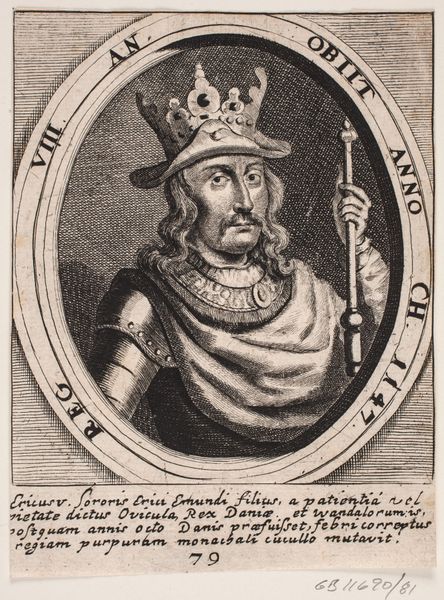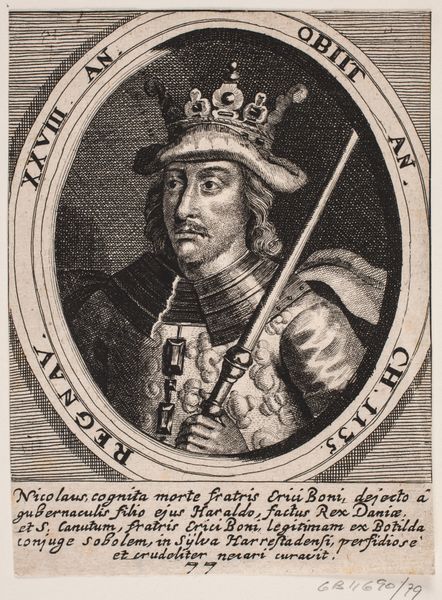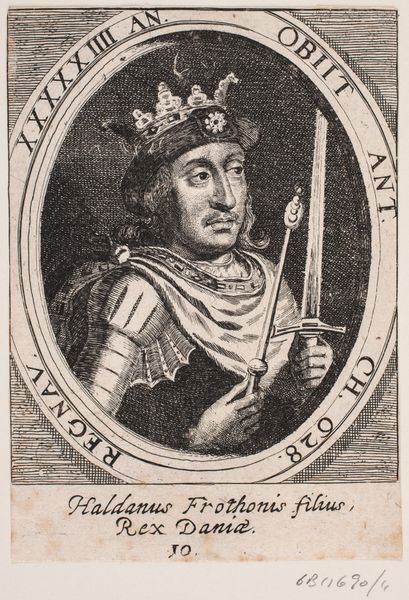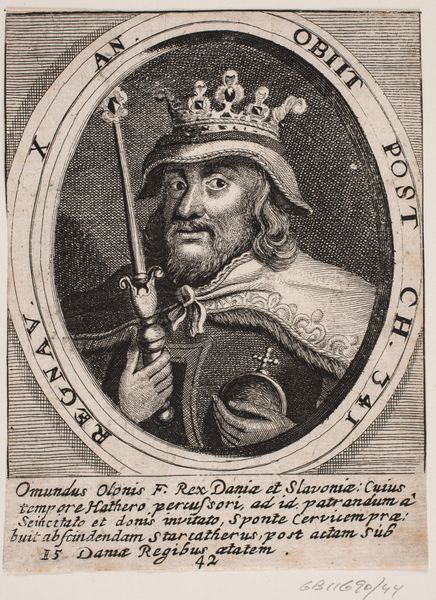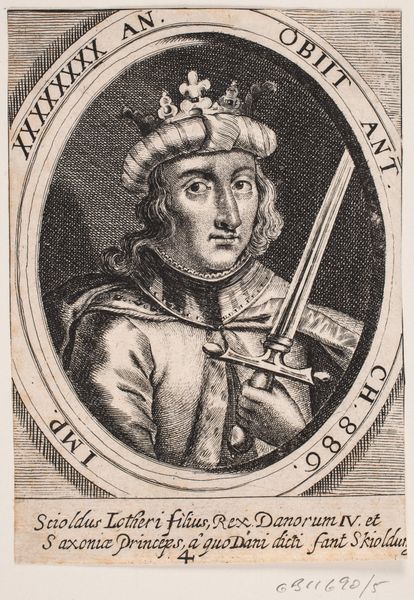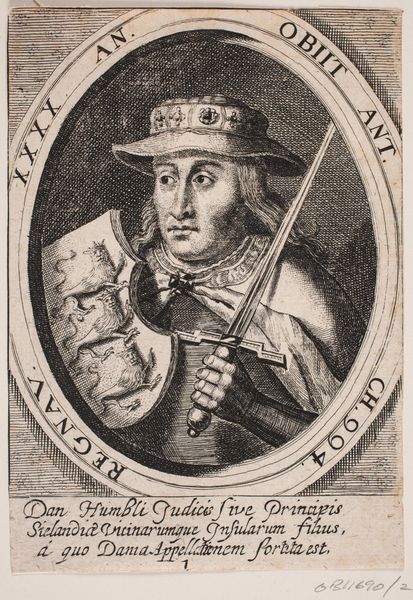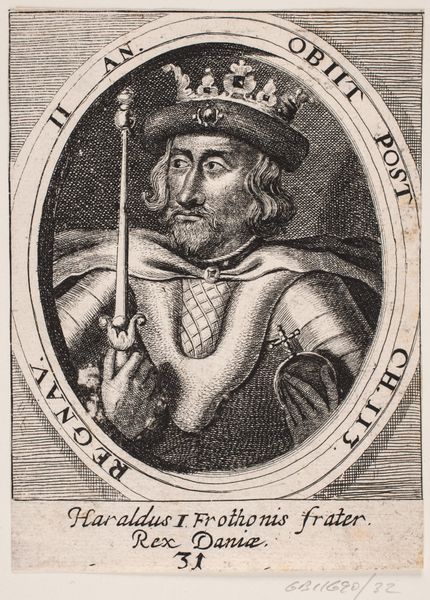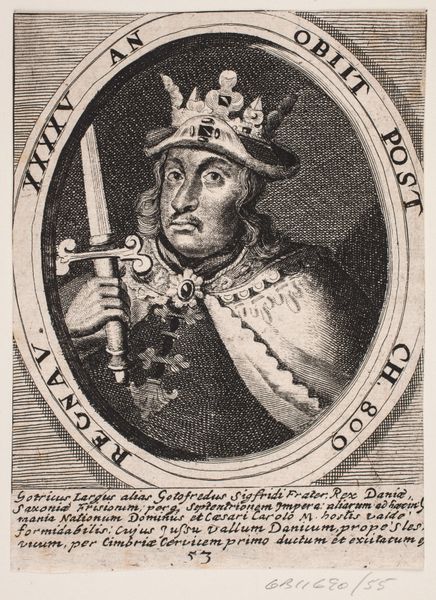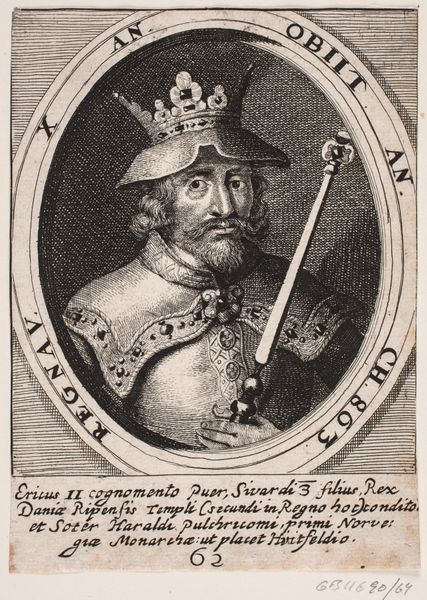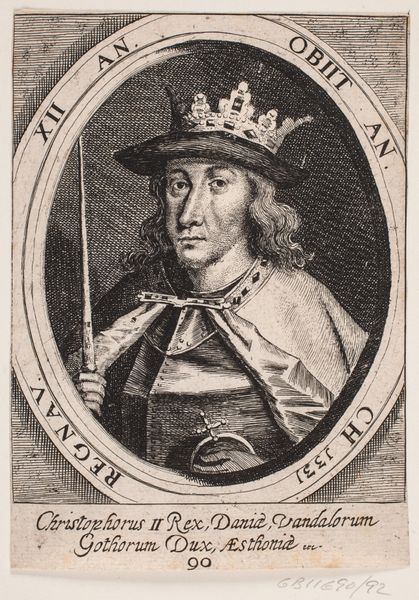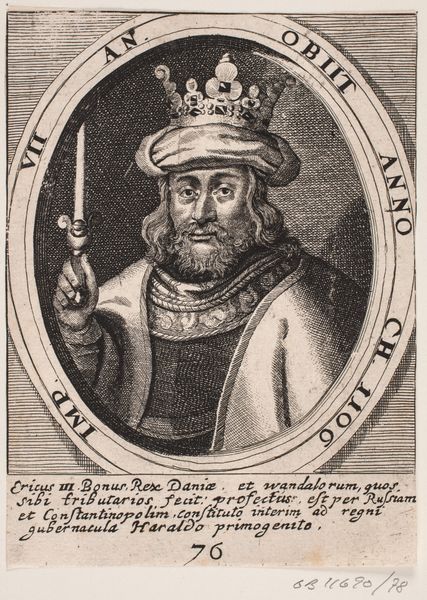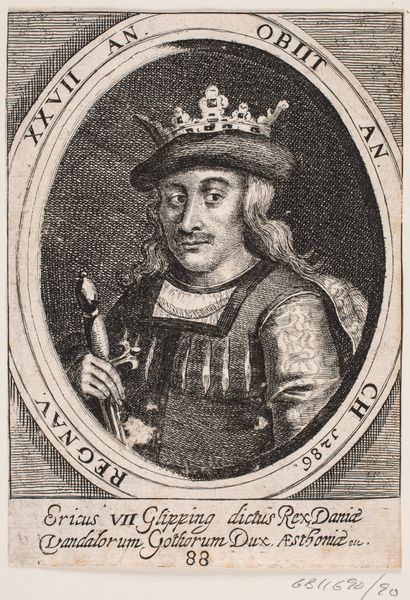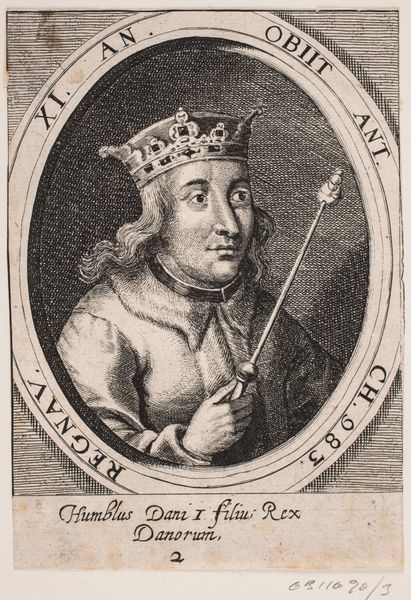
print, engraving
#
portrait
#
medieval
# print
#
history-painting
#
engraving
Dimensions: 140 mm (height) x 100 mm (width) (bladmaal)
This print of King Erik I was made anonymously, using a technique called engraving. This is an incisive method, where the design is cut directly into a metal plate, in this case likely copper, using a tool called a burin. Look closely, and you'll notice the crisp lines and precise details that define the image. The engraver has skillfully rendered the king's features, his crown, and the folds of his garments, line by line. Engraving demanded considerable skill and time. The engraver would have to plan the composition carefully, and then work with steady hands to translate the design onto the metal surface. The depth and spacing of the lines determine the tonal range of the print, from light to dark. Once the engraving was complete, the plate would be inked, and then pressed onto paper to produce the final image. Consider the amount of work involved in producing this image, and how that labor gives the print its meaning and value. It prompts us to think beyond the subject represented, and appreciate the skilled work and process behind its creation.
Comments
No comments
Be the first to comment and join the conversation on the ultimate creative platform.
